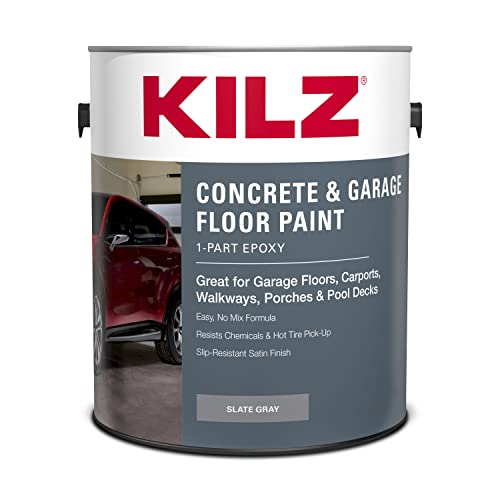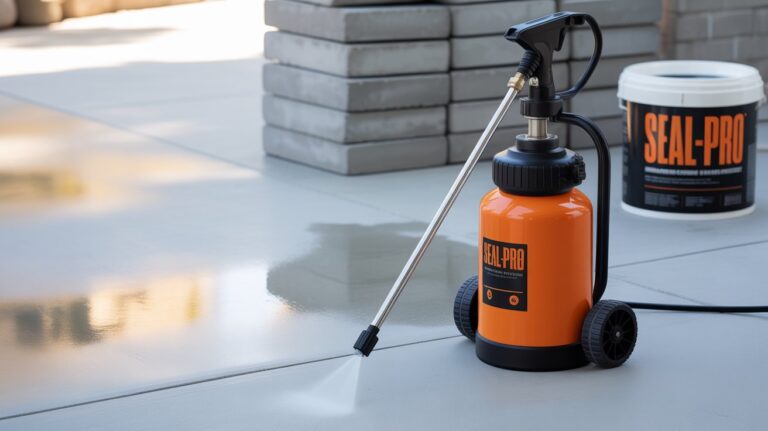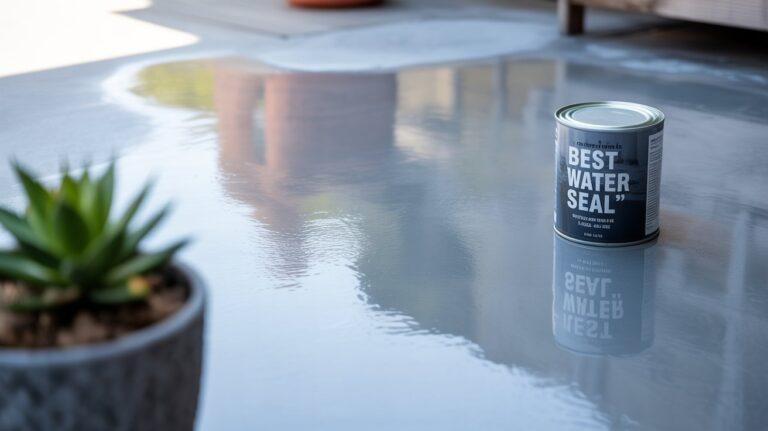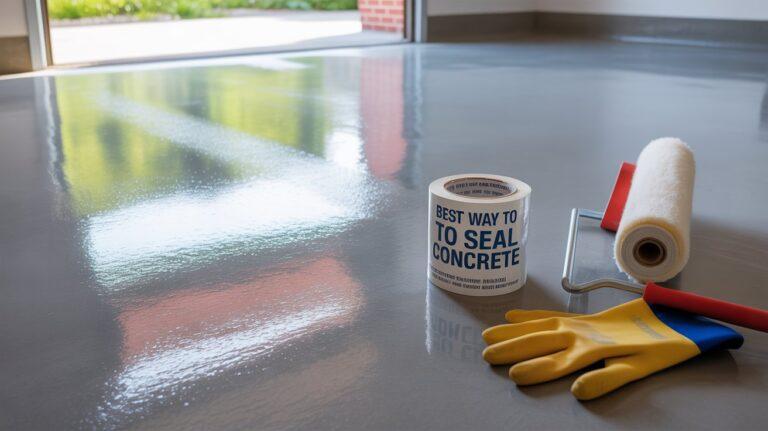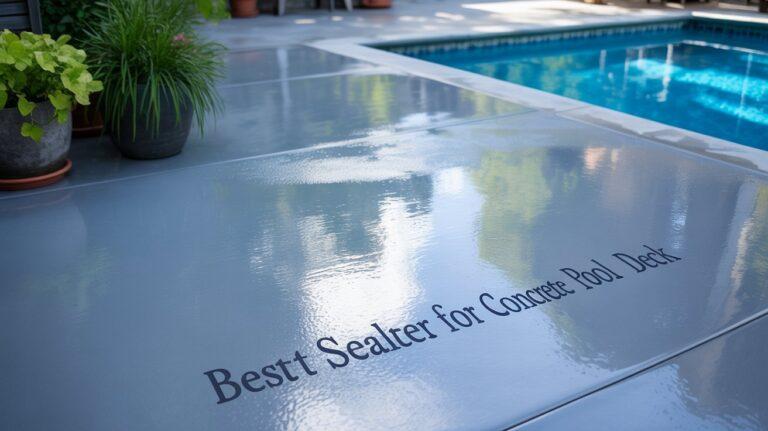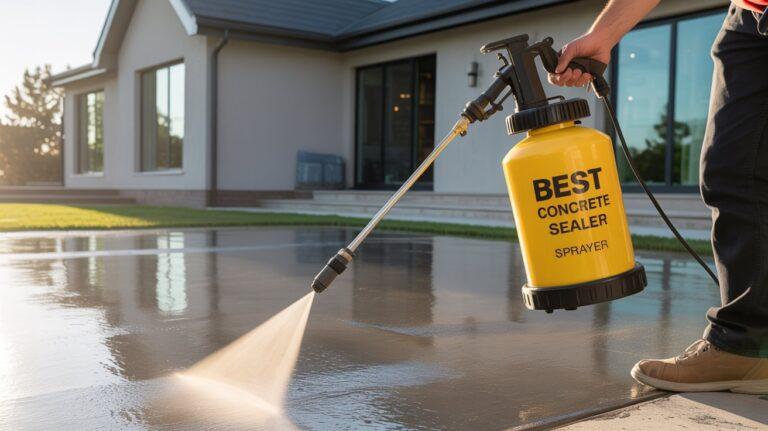When Can I Apply A Second Coat Of Concrete Sealer?
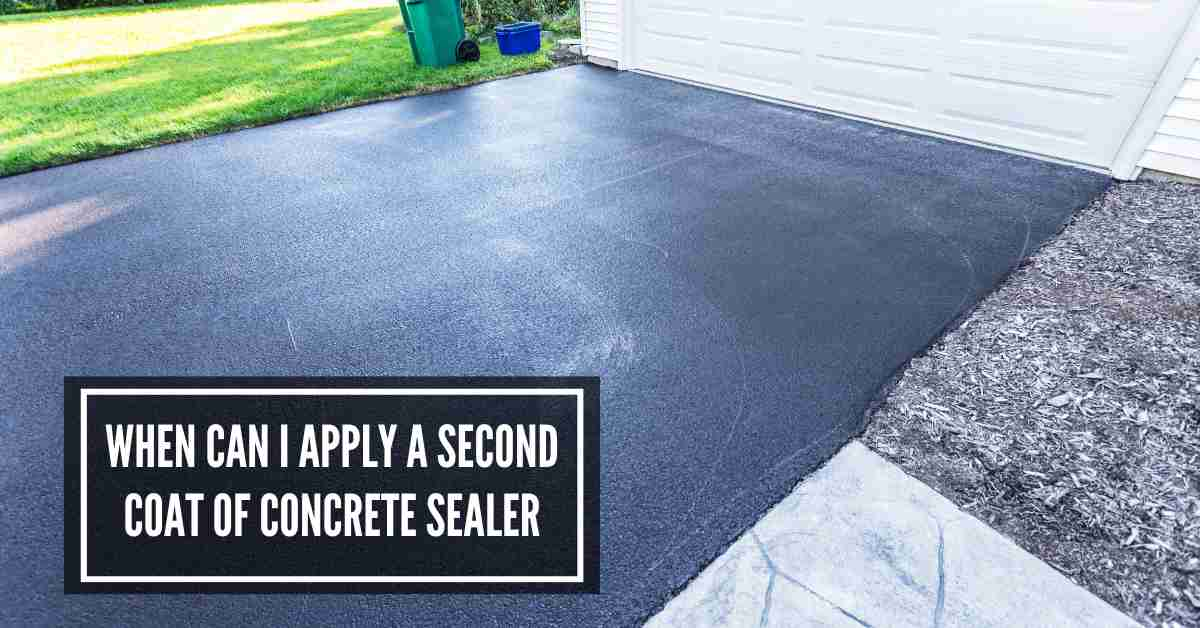
It is best to wait at least 24 hours before applying the second coat of a concrete sealer. Based on the product formula, the sealant will be touch-dry within 2-4 hours. But giving the concrete sealer a whole day to cure will help you achieve the best result.
Concrete surfaces are very porous. Various elements, such as UV rays, grease, moisture, salt, oil, dirt, chemicals, etc., can harm them over time. You must protect your concrete floors by sealing them properly. In this post, you will get a clear overview of “When can I apply second coat of concrete sealer?” Let’s dive in!
Why Apply Multiple Coats Of Concrete Sealer?
It is always best to apply two thin coats of concrete sealers on most surfaces than a single thicker coat. A single coat of concrete sealer won’t provide enough coverage until the layer is thick enough.
But, too thick a sealer can cause moisture and air to be trapped under the sealer. It will create a refractive index and air bubbles. The sealer won’t bond well on the surface and will lose its effectiveness over time. It won’t be as long-lasting as it should be.
Thinner coats get enough time to evaporate. Plus, it is more forgiving to correct imperfections. After all, you will have to put a lot of effort into removing an incorrectly applied thicker coat of a sealer.
Can You Apply Multiple Coats Of Concrete Sealer?
Most experts recommend applying several thin layers of concrete sealers to get the best result.
The first layer of a concrete sealer will work as a primer. It will seal off the surface porosity and create a uniform surface for the finish coat.
The concrete surface will absorb most of the first thin coat. A single coat is not enough to give the concrete surface a complete and finished look.
The second coat of the concrete sealer will ensure full and even coverage. Its appearance will be more attractive. Applying two layers of concrete sealers will ensure long-lasting durability.
Do All Concrete Surfaces Need Multiple Coats Of Concrete Sealers?
Almost all concrete surfaces are very porous as they are made of a mixture of cement, sand, and stone. They have a considerable number of holes or pores, which can hold or absorb air, water, and other liquids.
Hence, There is no non-porous concrete surface. A few concrete surfaces are less porous than others. But you still want to apply several coats of concrete sealer.
However, the thickness of the sealant will be less than others. Simply put, the more porous a concrete surface is, the thicker the sealer thickness.
Many experts recommend using three thin layers of concrete sealers to achieve the best results for highly porous concrete sealers. Of course, it will be time-consuming, but it is worth your valuable efforts and time.
When Can I Apply Second Coat Of Concrete Sealer?
It is best to wait at least 24 hours before applying the second coat of a concrete sealer. Based on the product formula, the sealant will be touch-dry within 2-4 hours.
But giving the concrete sealer a whole day to cure will help you achieve the best result.
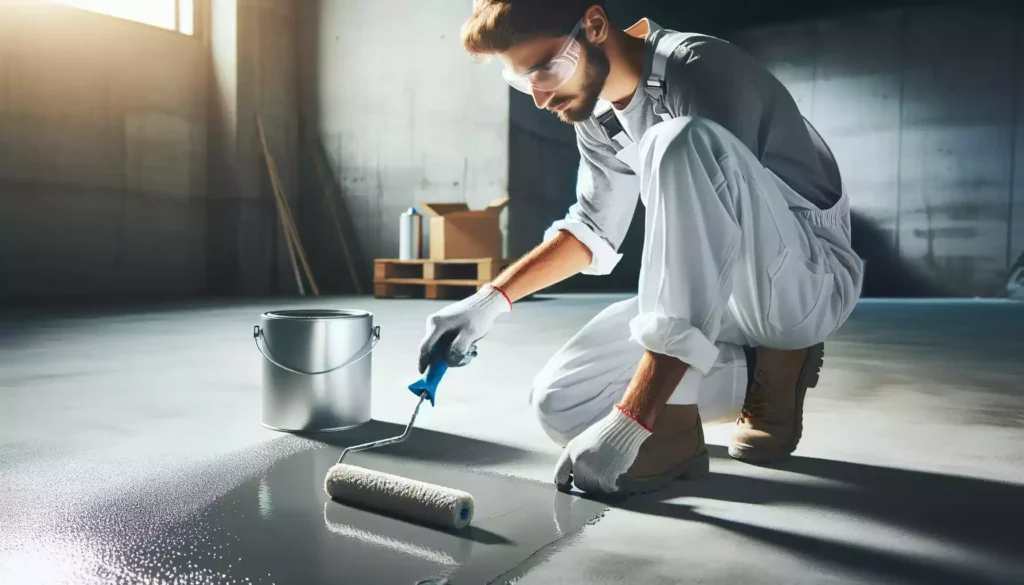
When fully dry, you can find out which areas need more sealant and which less. This will help you evenly distribute the sealer in all spots.
If you don’t give enough curing time for the first coat, moisture may get trapped under the second coat. It will create an ineffective barrier, which won’t be long-lasting.
Which Factors Determine The Best Time To Apply Second Coat Of Concrete Sealer?
Some crucial factors will determine the right time to apply a second coat of concrete sealer.
The following are some important points you should not overlook before adding the next sealant layer.
Drying Time
Not all concrete sealers need the same amount of time to dry. The ingredients and particular formula will determine how long it will take to dry completely. It will vary from brand to brand.
Of course, you want to consider temperature and humidity levels. These two attributes especially accelerate the curing reaction of concrete sealers.
Most experts agree that 75°F and 50% relative humidity levels are the standard conditions for concrete sealers.
Applying Method
Not all DIYers will apply the sealant in the same manner. An even and consistent distribution of the concrete sealer will ensure faster drying.
There should not be streaks, bubbles, or missed spots. Otherwise, you will have to first address these imperfections before applying the second coat.
Weather Conditions
Have you decided to apply the concrete sealer in extreme heat or direct sunlight? These weather conditions are not ideal for using this sealant.
Otherwise, the sealer will dry too fast. It will result in uneven application and poor adhesion.
Also, don’t choose any rain, snow, or even heavy fog days. Avoid applying the sealant in wet or rainy conditions. Otherwise, it won’t create a tight seal and will fail to perform as intended.
Do Driveway Sealers Need Two Coats?
Generally, residential driveways don’t need two coats of sealers because they lack heavy traffic.
A single layer of Asphalt or Blacktop sealers is enough to protect the paved areas from vehicle oils/lubricants, ultraviolet radiation, and precipitation.
But commercial driveways need two layers of sealers due to heavy traffic. The first coat will get rid of any light blotches, and the second layer will minimize the squeegee marks.
Once the second coat is fully dry, it will add a consistent and finished look. The high-traffic commercial areas will maintain a good appearance for a long time.
However, if your residential driveways are too old, applying two layers of thin coats is better for long-lasting protection. It will fix small and large hairline cracks and minimize imperfections.
How To Apply Second Coat Of Concrete Sealer?
When it comes to applying the second layer of concrete sealants, you must wait until the first coat is completely dry. The standard drying time is 24 hours. But it can be more or less depending on the manufacturer’s direction.
Generally, the first coat needs more time to dry than the second one because it directly sits on the concrete surface. Remove any dust or debris from the first coat. It is a bit common if the concrete surface is located in a high-traffic area.
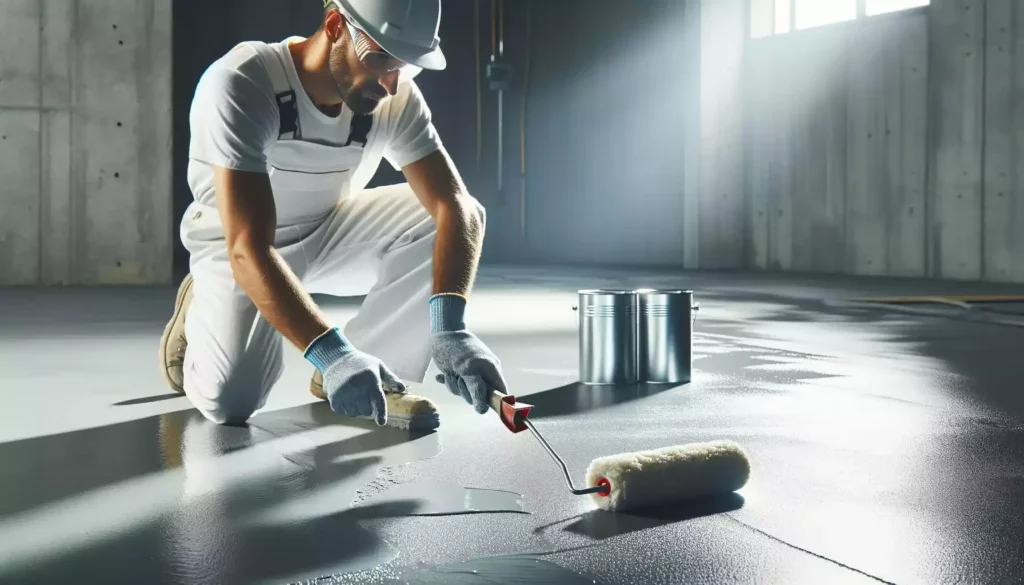
So, how do you apply the second layer of concrete sealant? Following the opposite or perpendicular direction to the first coat is best. You will get an even coverage.
There should not be streaks or bubbles after applying the second layer of the concrete sealer. It may take around 4-8 hours to dry thoroughly.
But, the drying time may be a bit longer depending on the weather conditions. If you want to paint the concrete surface, wait at least 2-3 days.
What Happens If The Second Coat of Concrete Sealer Is Under- Or Over-Applied?
Under- or over-application of a sealant happens from negligence. You might be trying to save the sealer’s quantity by making the coat extremely thin.
Or you are applying too thick a layer of paint to achieve extreme protection. Neither of these practices is good.
Why Is Underapplication Bad?
Your concrete surface won’t get the maximum benefit if the layer of the sealant is too thin.
The surface is more likely to attract residual dirt and dust. Also, you will see light and dark spots.
The best solution is to follow the manufacturer’s recommendation for applying a concrete sealant.
For instance, you can cover around 100 sqft of space with one quart of penetrating sealer. This will vary from brand to brand.
Why Is Over-application Bad?
Excessive use of concrete sealers can result in bubbles formation on the concrete surface. You may notice blisters, foam, and a milky white cloudiness on the concrete tiles.
It is more likely to create an impermeable barrier due to trapped water vapor. After all, the moisture in the sealant will take more time to dry.
The best solution for over-application is first stripping off the existing layer. Then, apply one or two thin layers of sealants.
Some experts suggest using back-rolling techniques to remove unwanted sealants from the surface. But it is not an easy job for people who don’t have enough experience.
FAQ’s
Can I apply a second coat of sealer if the first coat is still tacky?
No, it’s best to wait until the first coat is no longer tacky to ensure proper adhesion and finish.
Does the type of concrete sealer affect the time between coats?
Yes, different sealers (water-based, solvent-based, acrylic, epoxy, etc.) have varying drying times, which affects the interval between coats.
What are the risks of applying a second coat too soon?
Applying too soon can lead to poor adhesion, bubbling, streaking, and an uneven finish.
Can weather conditions affect the sealing process?
Yes, high humidity, temperature, and rain can significantly impact the drying time and the appropriate time to apply a second coat. Ideal conditions are dry weather with temperatures between 50°F and 90°F.
What are the benefits of applying multiple coats of sealer?
Multiple coats enhance durability, protection, and the appearance of concrete.
How can I maintain my sealed concrete surface?
Clean regularly with mild soap, avoid harsh chemicals, and reseal every few years.
Conclusion
Concrete sealers come in various types, such as Epoxy Coatings, Urethane Coatings, Acrylic Concrete Sealers, etc. Acrylic Concrete Sealers need to be re-applied after 1-3 years. But Epoxy and Urethane Coatings last around 5-10 years.
Regardless of your option, knowing the right way to apply a concrete sealant is crucial. Now, you can answer the question, “When can I apply second coat of concrete sealer?” Make sure to perform regular maintenance to keep your concrete tiles in tip-top condition.

I am Robert Sandin, a professional sealing expert with a diverse range of expertise. From concrete to various other materials, I possess in-depth knowledge and experience in the art of sealing. On my website, I offer valuable tips and expert recommendations on sealing techniques and products for different materials. Whether it’s concrete, wood, metal, or more, I am committed to providing you with the guidance you need for successful sealing projects.

